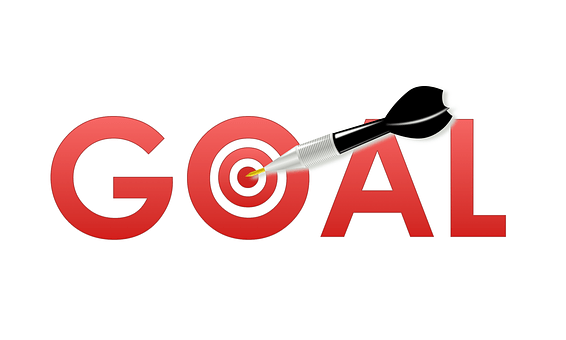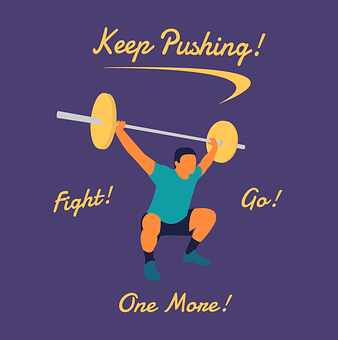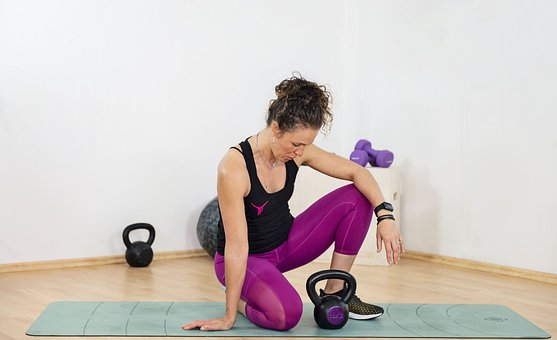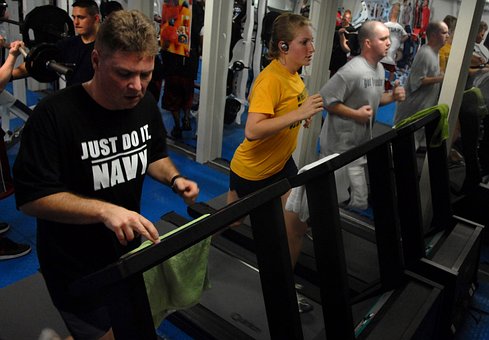
It is extremely essential to come up with a specific and practical set of fitness aims when you begin your workout regimen. It can be beneficial to have objectives to reach when working out, but it’s also useful for motivation; visiting the gym repeatedly, or going for a run during the cold evenings.
Without setting your targets, your exercise program will not have focus and it is probable that you will either get bored and quit, or cause yourself injury by working out incorrectly. Continue reading to find out the precise way to create your physical fitness objectives, the relevancy of doing so and the approaches you can use to guarantee you maximize your objective accomplishment.
Why is Setting Fitness Goals Important?
Creating objectives related to fitness is a terrific way of ensuring you achieve what you are hoping to from your workout program. Research has shown that it can aid in making the correct decisions, increase one’s exertion and keeping them inspired for an extended period.
Having definite objectives for your physical fitness will assist you in attaining the outcomes you wish to reach – whether that be slimming down, growing muscles, preparing for a particular event or anything else. They will support you as you strive to power on despite fatigue, lethargy, or doubts; as you have set objectives to regulate your training, supply a precisely defined purpose to your workouts.
It is crucial to ensure that these objectives remain attainable. Many of us attempt to start a fitness program while set with unrealistic goals and end up abandoning the attempt when these targets aren’t met, which causes more negative effects than positive in the future.
The Psychology of Fitness Goals
Most of the time, it is our mental strength which shuts us down from achieving our fitness objectives before our physical capability does. That is why it is important to build up our mental resilience and prepare ourselves mentally to work hard for our set goals. It is essential to be dedicated to your goals in order to realize them. This may be clear, however guaranteeing that dedication isn’t as trouble-free as it appears.
A good approach to this is to establish fitness objectives that are pertinent to you and your lifestyle. The greater your belief in the importance of something, the more devoted you will be to it. As an example, if someone close to you has cancer, you would more likely contribute to cancer charities than any other type of organization since it is a problem that is impacting you personally.
Next, you need to make each of your fitness goals personal. Using one of many generic plans available may be straightforward, but it is improbable to produce the desired result. This is because you had no involvement in the coming to a decision or the setting of these objectives. You should continually remind yourself of the reasons why your objectives are essential to you. This will strengthen your dedication to your physical fitness aspirations, immensely boosting your accomplishments.
How to Set Fitness Goals
There is no one best way to formulate your exercise goals, but there are several options you can experiment with to figure out what works for you.
Tackle them one at a time.
Initially, it is essential to avoid attempting to aim for too many objectives at the same time. Having a single, designated goal will help you to remain diligent and inspired, increasing your chances of success. If you have multiple objectives, it’s essential to address each one separately. Finishing one successfully will give you the assurance you need to accomplish the next, and so on.
Make your goals important to you.
It’s essential that your fitness objectives are something that you personally consider to be meaningful. Glancing at social media can make one begrudge the people who seem really fit and desire to imitate them in every regard. This won’t necessarily work, however. It is imperative that you confirm your physical fitness objective is something that genuinely reflects your intentions. If you care deeply about it, you are more likely to invest the necessary effort and get the desired outcome.
Make your goal Specific, Measurable and Time Critical.
When establishing objectives for your physical fitness, you must make certain that, to begin with, you can evaluate them. Instead of saying “I want to lose weight,” “I want to run longer,” or “I want to lift weights,” be more specific and assign a numerical goal to each of these ambitions: “I want to lose 10 lbs,” “I want to run 10 km,” “I want to lift 80 kg” etc.
You need to assign a time frame to these in order to make them specific. When do you need to have accomplished these objectives by? Saying you want to do something like run 10km without a pause, is all well and good; however, in the absence of a target date, you will have inadequate determinacy and a plan. In the event that you express the intention to be able to run 10km without stop by the close of the year, it offers you the capacity to devise a methodologically devised, focused, and coordinated plan to manage to your objectives. Moreover, having a deadline can create a sense of urgency which can give extra drive.
Aim low to begin with.
Do not make any target excessively easy, but make sure it can be accomplished. If you make it too challenging to handle, it can lower the chances of success, resulting in frustration and potentially more harm in the future. Be sure you can reach your targets when going for them and as you increase your fitness, strength or slim down, you can increase your ambitions each time.
Be patient.
When it comes to achieving fitness and good health, it is essential to think in the long term. It won’t be possible to reach your goals in seven days or one month, unless they are really simple, at which point you should make them a bit more ambitious. Persist and remain patient, and your hard work will eventually be rewarded with accomplishment.
Instead of worrying about the way your body appears, concentrate on what it is capable of achieving. With this newfound appreciation, you will be motivated to take care of your body better and promote its wellbeing. Check out these 10 targets which will help you become firmer, fitter, and improved.
1. Try one new workout every month
It is important to stick to a fitness routine, but not to do the exact same routine over and over again. Not exactly beneficial. Your body becomes accustomed to the same routines, distances, or weight if you stick to them, so to stay making progress, you should always push yourself. It is critical to switch up your exercise plan regularly; otherwise, you’ll feel disinterested. If you are not having fun, it will be more difficult to motivate yourself to exercise. Willpower alone is not enough; the key to regular exercise is enjoyment. News flash: Exercise should be fun.
2. Schedule workouts in your calendar
Whenever you have reservations, gatherings, or jobs marked down on your timetable, you understand that they will eventually be finished. You’ll likely be punctual, completely ready, and never miss it. Exercising should be treated as an important event that needs to be attended to, regardless of it not being a business gathering. Treat your fitness goals as importantly as you would any other commitments on your agenda. Sign up on the internet for a fitness session ahead of time or place “jogging” in your schedule.
3. Perfect your form
No matter how much you exercise or how many reps you do, proper form is key for effective strengthening and avoiding potentially negative consequences such as injuries and long-term damage. Correct form during a workout will ensure that your energy is used to do the most it can, meaning that your effort will not go to waste. If you do exercises incorrectly, you risk overusing muscles that weren’t meant to be used and opening yourself up to potential harm. Using proper form allows you to run quicker, jump higher, and exert more effort. It is essential to understand the exact technique for perfecting your posture in order to guard your body from any harm, enhance the strength of your muscles, and maintain a healthy physique.
4. Get a workout buddy
Do you have a companion such as a friend, partner, flatmate, or colleague who wishes to adhere to their promises? Have a friend be a source of support and motivation for you by trading nutritious meal plans, sending messages of inspiration, and inquiring about the other’s progress and attitude. It’s helpful to spur one another on if you have the same goals, nevertheless it is still worthwhile taking part in activities with a companion such as attending a yoga session or meeting up with a work colleague on a regular basis to check in on how you are both progressing on your ambitions. Being a team makes you more motivated and inspired.
5. Do something active every week that makes you feel calm
Exercising should not be solely about putting in maximum effort every time. You need to devote as much attention to taking a break as you do to workout days and consider the psychological advantages of fitness as much as the physical ones. In lieu of sticking with grueling, energizing, perspiration inducing exercises, include an activity every week that soothes you. That is a reasonable fitness objective to remain dedicated to.
6. Walk instead of drive whenever you can
It is said that a person in good health should aim to complete 10,000 steps daily. I don’t approve of reducing our wellness to figures, because it’s much more dependent on person-to-person experiences. Even so, I cannot deny that walking has great health benefits. The human frame should be continually engaged during daylight hours, yet most of us are perched virtually all day long (either working, driving, or spending hours on end consuming content from streaming services).
7. Remind yourself of your “why” every day
As the year progresses, it can be all too easy to forget the reasoning behind the resolutions we make, leading to a lack of accountability in achieving them by February. As such, the premise behind making resolutions successful is to fully understand why you are making the goals that you set. For instance, going to the exercise center day by day is satisfactory, however you should likewise take a gander at the more extensive objective. What is your purpose in going to the gym on a daily basis? Do you want to become more powerful, have a greater sense of self-assurance, or have a longer life? If you don’t consider the purpose, the objective will never be stimulating enough to attain.
8. Drink more water
Drinking plenty of fluids has been a practice for years, but the key advice from all specialists is to stay hydrated. Your body requires water in order to perform all of its functions. It is no wonder that obtaining a sufficient intake of water is a priority for wellbeing as well as becoming your most robust and fit version of yourself. The amount of water that is necessary for an individual to reach their optimal health depends on multiple factors such as the person’s lifestyle, activity level, and general constitution. As a general guideline, it is recommended that a person consumes a number of ounces of water equivalent to half their body weight per day, or just drink as much as possible.
9. Get 8-9 hours of sleep
Repeat after me: A good night’s sleep is extremely important to your health and well-being. Resting gives your body the opportunity to recuperate and construct muscles, as well as storing strength that you can use during your following exercise session. It is vital for both your wellbeing and your workout performance to get quality rest, therefore monitoring how many hours of sleep you actually sleep every night can help identify if you are getting adequate rest or if you could use improvement. Aim for 8 to 9 hours of sleep, but make sure to get at least seven.
10. Live less sedentary
Do not wait for a designated exercise time or use “rest day” as an excuse to stay on the couch the whole day. The greatest fitness goal you could set for yourself is not to exercise more intensely or for a longer period of time, but instead to reduce the amount of time spent in sedentary activity. This suggests emphasizing activities outside the gym and fitness classes that add movement to your life. You should give your body precedence even if you are not exercising. By engaging in physical motion throughout the course of the day, a person can foster sustainable energy levels and alleviate posture-related issues and long-term aches.
Sticking to Your Goals
Generating the objectives in the beginning is the simple part. Remaining committed and accomplishing those objectives is where it becomes difficult. Setting up your goals the way described can make it a much simpler task.
Having people to back you up is always helpful throughout your fitness journey as they can help keep you motivated. It’s even more beneficial if you can work out with somebody who has the same objectives as you. You and your companion can cheer each other on as you strive to reach your goals, while the competitive aspect can spur you both on even further.














